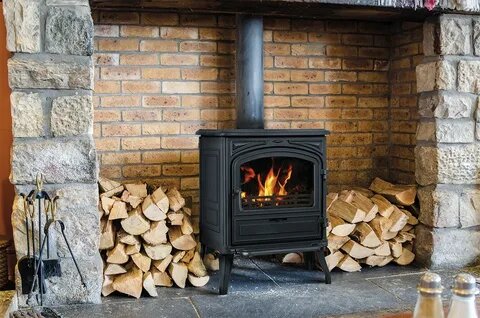Installing a wood-burning stove in a historic home brings warmth, character, and energy efficiency to a cherished living space. However, unlike modern homes, historic properties often have unique structural elements, and preservation requirements that must be carefully considered during the installation process. With the right approach, your wood-burning stove can blend seamlessly into a historic home’s aesthetic while meeting safety standards. In this guide, we’ll explore the steps to install a wood-burning stove in a historic home, with tips on adapting to specific challenges. For high-quality stoves that fit various home styles, Caledonian Stoves provides a diverse selection tailored to suit your needs.
Step 1: Researching Local Regulations and Preservation Guidelines
Before Wood burning stove installation, it’s essential to research local regulations, especially for historic homes. Many areas have guidelines for modifications, even inside private residences, to maintain the property’s historic value.
- Building Codes and Permits: Local authorities may require permits for installing wood stoves in historic homes. Building codes often dictate flue size, clearances, and ventilation, so consult with a building inspector to confirm that your plans meet all requirements.
- Historic Preservation Standards: If your home is part of a recognized historic district, there may be restrictions on interior and exterior modifications. It’s wise to contact a local historical society or preservation committee to understand any limitations.
- Professional Consultation: Engage professionals with experience working on historic properties. They can ensure that all work complies with preservation guidelines and maintains the character of your home.
Step 2: Choosing a Compatible Wood-Burning Stove
Historic homes often have unique architectural details, so finding a stove that complements the aesthetic is essential.
- Design Style: Look for stoves that blend with the architectural period of your home. Classic cast-iron stoves or Victorian-style models often suit historic properties, while modern designs might feel out of place. Caledonian Stoves offers a variety of traditional and classic wood stoves that work well with historic settings.
- Size and Efficiency: Choose a stove sized to heat the square footage of the area while minimizing structural changes. A medium-sized stove typically works well in small-to-medium rooms, while larger stoves may be required for bigger spaces. Opt for high-efficiency models, as they provide warmth without excessive fuel consumption, reducing the need for chimney maintenance.
- Historic-Appropriate Finishes: Many stoves come in enamel-coated finishes, which can complement the home’s original details. Choose finishes that match existing materials or colors for a cohesive look.
Step 3: Evaluating the Space and Determining Placement
The layout of historic homes can be unconventional, so choosing the right placement for the wood stove is crucial.
- Original Fireplaces: If your historic home has an existing fireplace, this is often the ideal spot for a wood stove insert, saving space and allowing you to use an existing chimney. Stoves with smaller footprints can also fit comfortably in these spaces.
- Central Location: In many historic homes, placing the stove centrally provides better heat distribution across the space. This also helps avoid unnecessary structural changes and lets the heat radiate outward.
- Flooring Considerations: If your floors are made from old wood, tile, or other potentially flammable materials, install a non-combustible hearth pad beneath the stove. Stone or tile hearths can also enhance the room’s historic appeal.
Step 4: Preparing a Safe and Stable Installation Area
Historic homes may require special reinforcement or adjustments to prepare the installation area.
- Wall Clearances: In homes with thick or irregular walls, maintaining proper clearance between the stove and the wall is crucial. Installing a heat shield can reduce the necessary clearance, protecting the walls without compromising the stove’s heating efficiency.
- Hearth Requirements: Make sure your hearth pad extends at least 18 inches in front of the stove and 8-12 inches on either side, per standard safety recommendations. Caledonian Stoves offers a range of stylish hearth pads that suit traditional home designs.
- Structural Support: Historic homes may have uneven floors or weaker joists, so assess the stability of the installation area. Reinforcing the floor can prevent sagging under the stove’s weight, and a professional can determine if additional support is necessary.
Step 5: Installing Ventilation and Chimney Lining
Proper ventilation is essential for a wood stove’s efficiency and safety, especially in older homes.
- Chimney Inspection: If you’re using an existing chimney, have it inspected and cleaned by a professional. Older chimneys may have built-up creosote, cracks, or blockages that must be addressed. Lining the chimney with a stainless steel liner can help improve draft and reduce creosote accumulation.
- Ventilation for Airtight Rooms: Some historic homes are naturally drafty, which aids ventilation. However, if your home has been retrofitted for energy efficiency, it might be more airtight, requiring an external air kit. An outside air kit draws air from outside, ensuring optimal combustion while maintaining indoor air quality.
- Insulating the Chimney: Insulating the chimney can help retain heat and improve stove efficiency. It’s especially useful in cold climates where outdoor chimney sections can lose a significant amount of heat.
Step 6: Maximizing Heat Distribution Throughout the Space
Historic homes with high ceilings or multiple rooms require specific strategies to maintain comfortable heat levels.
- Ceiling Fans: Ceiling fans are a helpful tool for circulating warm air. In winter, set the fan to rotate clockwise at a low speed, which pushes warm air down into the room rather than allowing it to accumulate near the ceiling.
- Convection Fans on the Stove: Stove-top fans, which work without electricity, can circulate warm air into adjacent rooms and help maintain an even temperature throughout the space.
- Room Dividers and Open Doorways: Open doors and remove barriers in areas that need heat from the stove. This can allow warm air to flow from the stove area into nearby rooms, creating a cozy atmosphere throughout the home.
Step 7: Selecting the Right Fuel for Historic Homes
Using high-quality fuel contributes to efficient, clean burning that’s especially important in older properties.
- Seasoned Hardwood: Choose dense hardwoods like oak, hickory, or maple, which burn hotter and longer, reducing the frequency of refueling and keeping creosote buildup to a minimum. Well-seasoned wood (dried for 6-12 months) helps maintain clean air inside and outside the home.
- Avoiding Softwoods: Softwoods like pine burn quickly and produce more creosote, which can increase chimney maintenance needs. Stick to seasoned hardwoods for optimal performance and safety.
Step 8: Maintaining the Stove and Chimney in a Historic Home
Regular maintenance is essential to keep the stove functioning safely and efficiently in a historic property.
- Chimney Cleaning: Historic homes often have more substantial chimney walls that accumulate creosote over time. Schedule a professional cleaning at least once a year to minimize the risk of chimney fires.
- Gasket and Door Inspection: Check the door gaskets regularly to ensure they form a proper seal, which is essential for maintaining the stove’s efficiency. Worn gaskets should be replaced promptly.
- Ash Removal: Empty the ash pan regularly, but leave a thin layer to help insulate new fires. Use a metal ash bucket with a lid to store ashes safely until they’re fully cooled.
Step 9: Consult with Professionals for a Seamless Installation
Working with professionals who specialize in historic properties ensures the stove installation is efficient, safe, and aesthetically appropriate.
- Experienced Installers: Professionals can help navigate building codes and handle unique challenges posed by historic homes. They can recommend the best options for preserving the home’s structure while accommodating the wood stove.
- Quality Stoves from Caledonian Stoves: For top-quality stoves and expert advice, Caledonian Stoves offers a range of models suited to the unique demands of historic properties. Their selection includes stoves that balance efficiency with timeless design, making them ideal for historic homes.
Step 10: Enhancing Your Home’s Historic Charm with the Stove
A wood-burning stove can serve as both a heat source and a design feature in your historic home.
- Fireplace Accessories: Use cast-iron or brass fireplace tools that complement the stove and match your home’s period style. Firewood baskets, screens, and companion sets add character and function.
- Decorative Firewood Storage: Firewood can become part of the room’s decor. A wrought iron or brass log holder can add a historic touch, keeping your firewood accessible and adding charm to the stove area.
Conclusion
Installing a wood-burning stove in a historic home combines the benefits of warmth and energy efficiency with timeless charm. From selecting a compatible stove to maintaining the chimney, every step requires careful consideration of both functionality and historic preservation. By working with professionals and choosing quality products, such as those from Caledonian Stoves, you can ensure your stove installation fits seamlessly within your home’s original character. With the right approach, a wood-burning stove can become a cherished centerpiece that enhances the historic appeal of your home.




